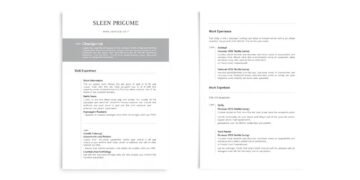Did you know that your initial months in a role can shape your entire career trajectory? Research shows that the first 90 days are critical for determining long-term performance and success. This period is not just about learning the ropes but also about setting the foundation for future achievements.
A structured onboarding process can make all the difference. According to a 2018 survey, 50% of employees face turnover risks within this timeframe. To navigate this phase effectively, experts like Matt Spielman recommend a dual approach: employer-driven onboarding combined with a personal 90-day plan.
This article breaks down the journey into three phases: Learning, Contributing, and Leading. You’ll also discover actionable weekly milestones and strategies like the ACHIEVE goal-setting model to ensure early wins and sustained career growth. Remember, sometimes slowing down is the fastest way to move forward.
Key Takeaways
- The first 90 days are pivotal for long-term job success.
- A structured onboarding process reduces turnover risks.
- Combine employer-driven onboarding with a personal 90-day plan.
- Focus on Learning, Contributing, and Leading phases.
- Use goal-setting models like ACHIEVE for actionable results.
Preparing for Your First Day: Setting the Stage for Success

Starting strong begins with thoughtful preparation before day one. Taking the time to understand your role and the organization’s company culture can make a lasting first impression. Researching the company through platforms like Glassdoor or LinkedIn can provide valuable insights into its values and expectations.
Understand the Company Culture and Expectations
Every organization has its unique way of operating. Spend time learning about the company’s mission, vision, and core values. This will help you align your actions with their goals. Additionally, understanding the processes and workflows can ease your transition into the new environment.
Connect with Your Manager to Clarify Goals
Your manager plays a crucial role in guiding your early success. Schedule a meeting to discuss your role and ask targeted questions like, “What does success look like in the first 30, 60, and 90 days?” Using tools like Spielman’s 90-Day Interview Guide can help structure this conversation effectively.
Gather Essential Resources and Tools
Before your first day, ensure you have all the necessary tools to hit the ground running. Create a SWIFT List (Systems, Workflows, Important Files, Tools, Training) to organize your resources. If you’re working remotely, practice virtual meeting etiquette to make a professional impression.
Week 1: Building Your Foundation

Your first week is about laying the groundwork for long-term success. This is the time to connect with your team, understand your position, and organize your workspace. Taking these steps early ensures a smoother transition and sets you up for future achievements.
Introduce Yourself to Key Stakeholders
Start by scheduling 15-minute “coffee chats” with cross-functional peers. These informal meetings help you build relationships and gain insights into the company’s culture. Use a 30-45 minute stakeholder interview framework to ask targeted questions and understand expectations.
Learn the Basics of Your Role and Responsibilities
Clarify your responsibilities by creating a RACI matrix (Responsible, Accountable, Consulted, Informed). This tool ensures role clarity and helps you prioritize tasks. Additionally, document your observations in a “Fresh Eyes Journal” to identify potential process improvements later.
Set Up Your Workspace and Systems
Organize your tools and resources for efficiency. Use password managers like LastPass to securely store credentials. Bookmark critical platforms such as Slack channels, project management tools, and HR portals. Complete mandatory compliance training using calendar blocking to stay on track.
By the end of the week, you’ll have a solid foundation to build upon. Remember, the first days are about learning, connecting, and preparing for the journey ahead.
Week 2: Accelerating Your Learning Curve
Week two is your chance to dive deeper into the company’s operations and culture. This phase is about moving beyond the basics and gaining a clearer understanding of how the business functions. Focus on identifying key areas where you can add value and align your efforts with the organization’s goals.
Deepen Your Understanding of Company Processes
Start by shadowing colleagues to observe workflows and decision-making. Use the “See One, Do One, Teach One” method to grasp the processes quickly. Document any gaps or inefficiencies in tools like Asana or Trello for future improvements. This hands-on approach will help you internalize the company’s way of working.
Identify Key Projects and Priorities
Look for low-risk projects that can serve as early wins. These should be tangible, aligned with company objectives, and visible to stakeholders. Volunteering for tasks under eight hours of effort can demonstrate your initiative and ability to deliver results. Use a SWOT analysis to prioritize tasks effectively.
Start Building Relationships with Your Team
Initiate peer lunch rotations or coffee chats to strengthen relationships with your team. These informal interactions help you understand the dynamics and culture better. Use calendar scheduling tools to organize these meetings efficiently. Building trust with people around you is crucial for long-term success.
Week 3: Contributing to the Team
Week three marks a pivotal shift from learning to actively contributing. This is where you start to make your presence felt within the team. By taking ownership of tasks, seeking feedback, and aligning your goals with the company’s objectives, you can demonstrate your value and set the stage for long-term success.
Take Ownership of Small Tasks
Start by embracing a “No Task Too Small” mindset. Volunteer for manageable assignments that allow you to showcase your skills. Use a public task board to track your progress and ensure visibility. This approach not only builds trust but also highlights your commitment to the work.
Seek Feedback on Your Progress
Regular feedback is essential for growth. Schedule bi-weekly sessions using the Start/Stop/Continue framework. This method helps you understand what’s working, what needs improvement, and what actions to maintain. Incorporating 360-degree feedback ensures a well-rounded perspective from peers and managers.
Begin Aligning Your Goals with Company Objectives
Use the ACHIEVE model to set actionable goals that align with the company’s priorities. Present a 5-minute “Lessons Learned” recap during team standups to share insights and demonstrate alignment. Initiating cross-departmental knowledge-sharing sessions can further integrate your role into the broader organizational strategy.
By the end of week three, you’ll have established yourself as a proactive team member. This phase is about balancing immediate contributions with long-term alignment, ensuring your efforts resonate with the organization’s vision.
Week 4: Establishing Your Presence
By week four, you’re ready to step up and make your mark in the organization. This phase is about transitioning from observation to active contribution. It’s time to solidify your role and demonstrate your value to the team.
Participate Actively in Meetings
Engaging in meetings is a powerful way to establish your presence. Master “Meeting Math” by preparing two comments for every hour of meeting time. This ensures you contribute meaningfully without dominating the conversation. Active participation also aligns with the expectations of your role and showcases your understanding of the business.
Propose Initial Ideas or Improvements
Start proposing ideas that can enhance the processes within the company. Use the SCAMPER technique (Substitute, Combine, Adapt, Modify, Put to another use, Eliminate, Reverse) to brainstorm innovative solutions. Focus on “Quick Hit” improvements that offer cost or time savings. These small wins can build credibility and demonstrate your proactive mindset.
Reflect on Your First Month and Adjust Your Plan
Take time to conduct a personal retrospective using the 4Ls framework (Liked, Learned, Lacked, Longed For). Compare your progress against your original 30-day goals using a Gantt chart. This reflection helps you adjust your plan and set actionable steps for the next phase. Scheduling a skip-level meeting with your manager’s superior can also provide strategic alignment and deeper insights.
Month 2: Deepening Your Impact
The second month is your opportunity to solidify your role and make a lasting impact. This phase is about moving beyond initial adjustments and focusing on meaningful contributions. By taking on more complex tasks, building stronger relationships, and evaluating your progress, you can establish yourself as a key player in the organization.
Take on More Complex Projects
Now is the time to challenge yourself with more advanced tasks. Look for projects that align with the company’s priorities and your skills. Use tools like Miro whiteboard templates to lead process mapping workshops. This will help you understand workflows better and identify areas for improvement.
Consider negotiating stretch assignments using the 70% readiness rule. This approach allows you to grow while contributing to the organization. Presenting a business case for tool upgrades with ROI calculations can also demonstrate your strategic thinking.
Strengthen Relationships with Cross-Functional Teams
Building strong connections across departments is crucial. Implement a “Department Swap” shadowing program to gain insights into different areas of the business. This will help you understand how your role fits into the bigger picture.
Conduct “Reverse Mentoring” sessions with junior staff to foster collaboration and knowledge sharing. These interactions can provide fresh perspectives and strengthen your network within the organization.
Evaluate Your Progress and Set New Goals
Take time to assess your achievements and identify areas for growth. Use a competency matrix to analyze skill gaps and create a personal development plan. This will help you focus on areas that need improvement.
Engage employees in learning by sharing your insights and supporting their growth. Track stakeholder NPS (Net Promoter Score) to measure your impact and find better ways to collaborate. By setting clear goals, you can ensure continuous progress and alignment with the company’s vision.
Month 3: Taking Initiative and Leading
The third month is your chance to step into a leadership role and make a significant impact. This phase is about moving beyond contributions and taking charge of initiatives that drive value for the company. By leading projects, improving processes, and summarizing your achievements, you solidify your position as a key player.
Lead a Small Project or Initiative
Take ownership of a manageable project that aligns with the business goals. Use Agile methodologies like sprints and scrums to manage tasks effectively. This approach ensures transparency and keeps the team aligned. Presenting a business case for resources demonstrates your strategic thinking and ability to deliver results.
Identify Opportunities for Process Improvement
Analyze workflows using Lean Six Sigma principles to identify inefficiencies. Pilot automation solutions with tools like Zapier or Integromat to streamline repetitive tasks. Hosting a “Lunch & Learn” session to share insights on process optimization can foster collaboration and showcase your initiative.
Prepare a Summary of Your Achievements and Insights
Create a “Brag Document” highlighting quantifiable achievements and lessons learned. This serves as a valuable resource for performance reviews and future planning. Sharing your insights with employees and leadership reinforces your contributions and aligns with expectations for long-term success.
First 90 Days in a New Job: Key Takeaways
Your initial three months are a launchpad for long-term career growth. This period is not just about adapting but also about setting the stage for future success. Reflecting on your journey, celebrating achievements, and planning ahead are essential steps to ensure sustained progress.
Reflect on Your Growth and Learning
Take time to evaluate what you’ve accomplished and learned. Conduct a SWOT self-analysis with your manager’s input to identify strengths and areas for improvement. Documenting your insights helps you track progress and prepare for future challenges.
Celebrate Your Early Wins
Acknowledge your achievements, no matter how small. Create a “Wins Wall” to visually track your progress. Celebrating milestones boosts confidence and reinforces your value to the team.
Plan for the Next 90 Days and Beyond
Develop a 6-month roadmap using the NOW-NEXT-LATER framework. Schedule quarterly career check-ins with HRBP to align your goals with organizational priorities. Joining Employee Resource Groups (ERGs) and enrolling in leadership development programs can expand your network and enhance your skills.
By reflecting, celebrating, and planning, you set the foundation for continued growth. This guide ensures you’re not just surviving but thriving in your role.
Conclusion: Mastering Your First 90 Days for Long-Term Success
Mastering the initial phase of a role sets the tone for long-term career growth. By following the three-phase mastery path—Learn, Contribute, Lead—you can build a strong foundation for success. Structured onboarding and continuous feedback are key to staying aligned with your company’s goals.
To support your journey, we’ve created a downloadable 90-day checklist. Tools like Trello, Notion, and WorkBright can streamline your efforts and keep you organized. Additionally, explore our bonus video series for advanced techniques to accelerate your progress.
Ready to take the next step? Create a personalized plan tailored to your new role. With the right strategies, you’ll not only thrive in your position but also set the stage for lasting achievements.
FAQ
How can I prepare for my first day at a new company?
Research the company culture, connect with your manager to clarify goals, and gather essential resources and tools to ensure a smooth start.
What should I focus on during the first week in my new role?
Introduce yourself to key stakeholders, learn the basics of your responsibilities, and set up your workspace and systems to build a strong foundation.
How can I accelerate my learning curve in the second week?
Deepen your understanding of company processes, identify key projects and priorities, and start building relationships with your team.
What steps can I take to contribute to the team in the third week?
Take ownership of small tasks, seek feedback on your progress, and begin aligning your goals with company objectives.
How can I establish my presence in the fourth week?
Participate actively in meetings, propose initial ideas or improvements, and reflect on your first month to adjust your plan.
What should I focus on during the second month to deepen my impact?
Take on more complex projects, strengthen relationships with cross-functional teams, and evaluate your progress to set new goals.
How can I take initiative and lead in the third month?
Lead a small project or initiative, identify opportunities for process improvement, and prepare a summary of your achievements and insights.
What are the key takeaways after completing the first 90 days?
Reflect on your growth and learning, celebrate your early wins, and plan for the next 90 days and beyond to ensure long-term success.
How can I master my first 90 days for long-term career success?
Focus on building relationships, understanding company processes, and aligning your goals with organizational objectives to create a strong foundation for your career.





